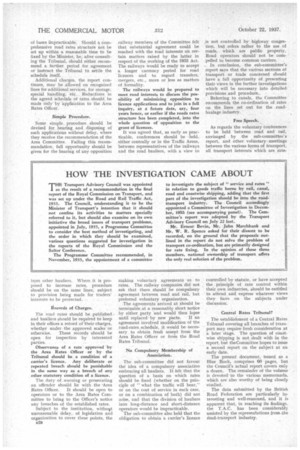HOW THE INVESTIGATION CAME ABOUT
Page 62

If you've noticed an error in this article please click here to report it so we can fix it.
-T-HE Transport Advisory Council was appointed J. as the result of a recommendation in the final report of the Royal Commission on Transport, and was set up under the Road and Rail Traffic Act, 1933. The Council, understanding it to be the Minister of Transport's intention that it should not confine its activities to matters specially referred to it, but should also examine on its own initiative the broad issues of transport problems, appointed in July, 1935, a Programme Committee to consider the best method of investigating, and the order in which they should be examined, various questions suggested for investigation in the reports of the Royal Commission and the Salter Conference.
The Programme Committee recommended, in November, 1935, the appointment of a committee to investigate the subject of " service and rates " in relation to goods traffic borne by rail, canal, road and coastwise shipping, adding that the lust part of the investigation should be into the road. transport industry. The Council accordingly appointed a Committee of Investigation in December, 1935 (see accompanying panel). The Committee's report was adopted by the Transport Advisory Council on July 22 last.
Mr. Ernest Bevin, Mr. John Marchbank and Mr. W. R. Spence asked for their dissent to be recorded, on the ground that the proposals outlined in the report do not solve the problem of transport co-ordination, but are primarily designed for rate fixing. In the opinion of these three members, national ownership of transport offers the only real solution of the problem.
























































































































